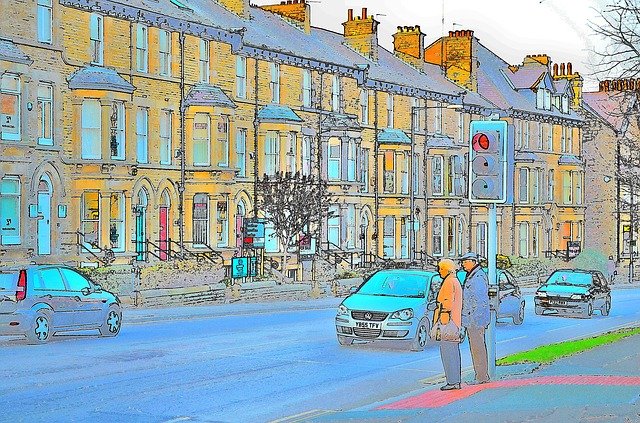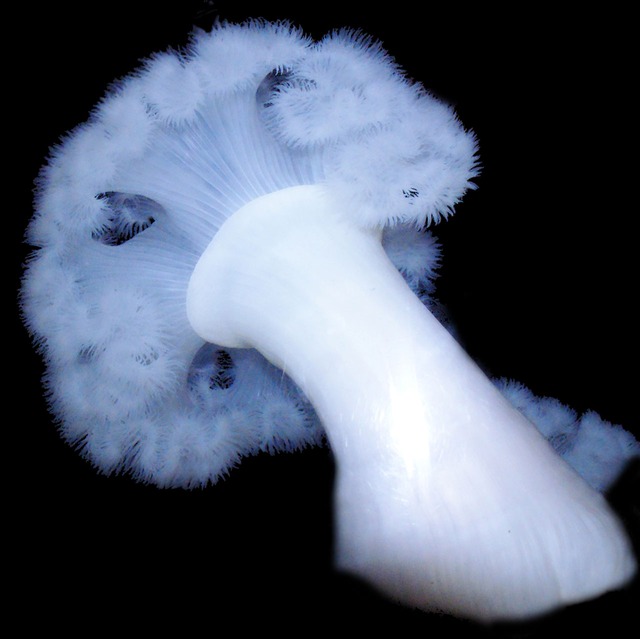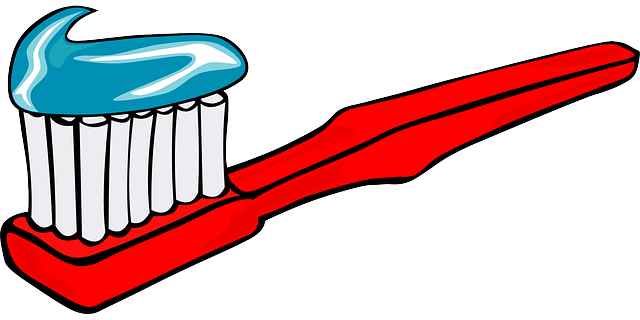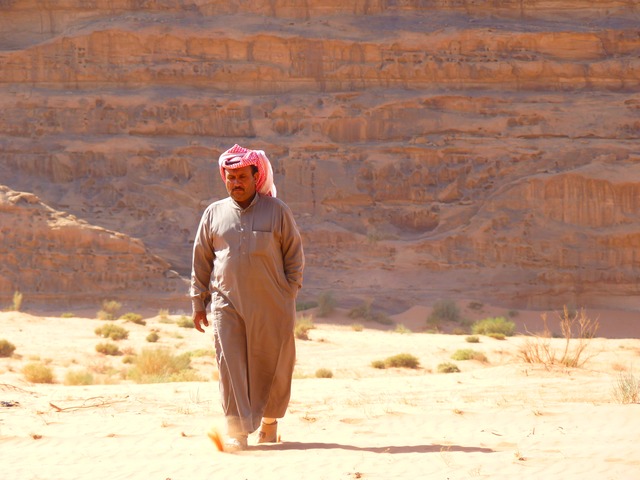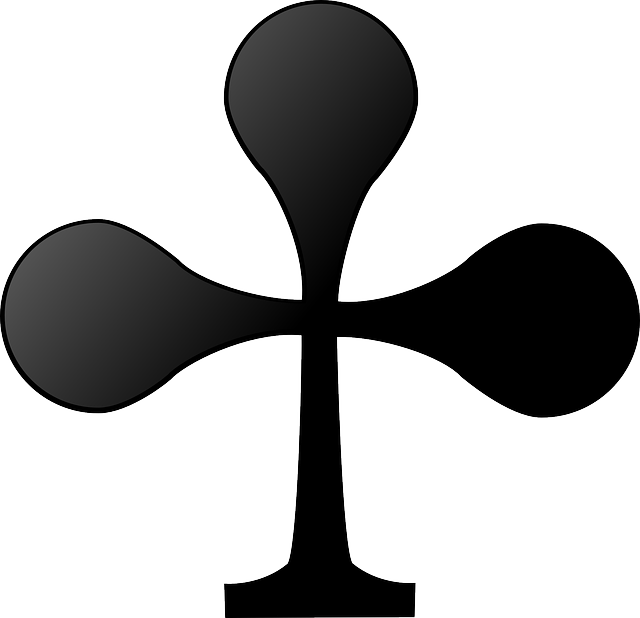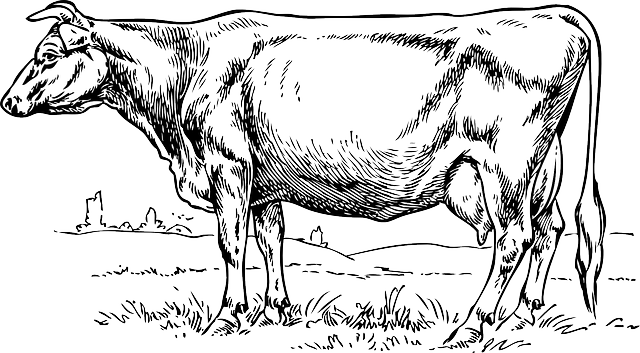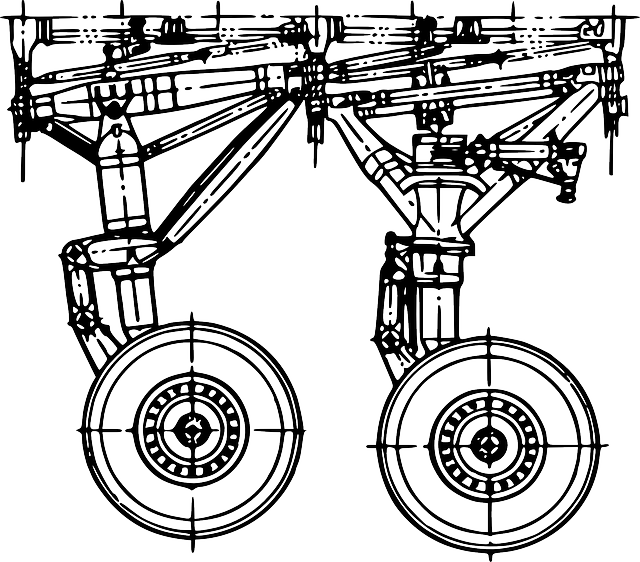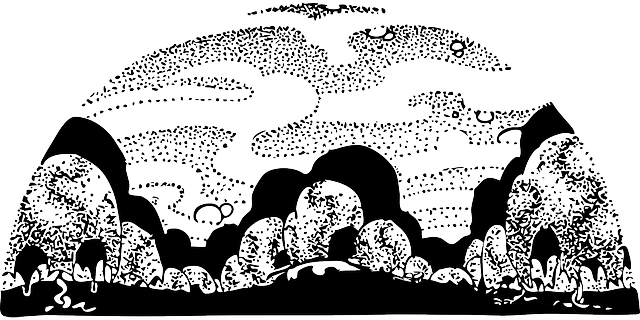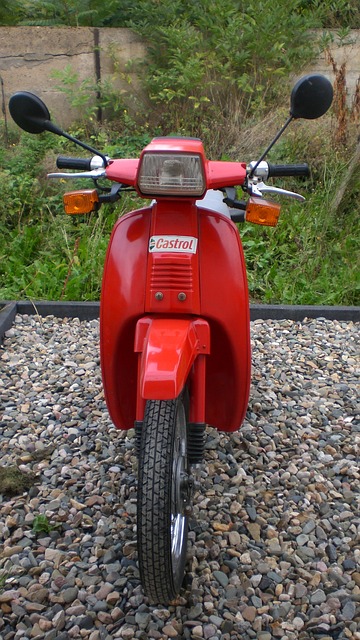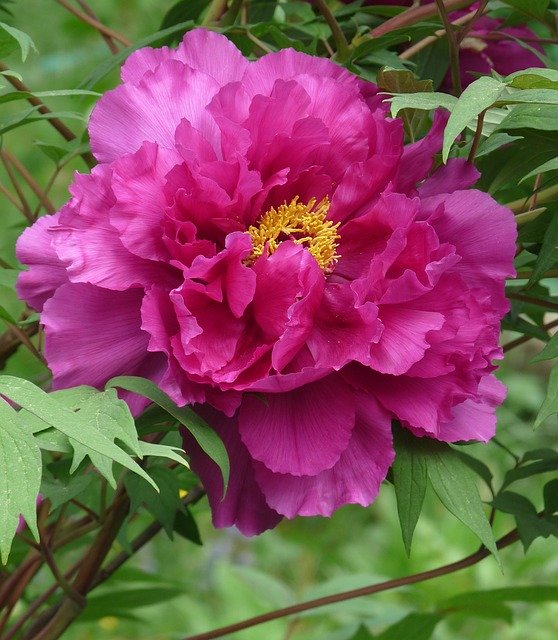روبل روسي
|
روبل روسي Российский рубль (روسية) | |||||
| |||||
| كود ISO 4217 | RUB | ||||
|---|---|---|---|---|---|
| المستعمل الرسمي |
|
||||
| Unofficial user(s) |
Partially recognized
republics
Unrecognized republics
|
||||
| التضخم | 5.2% (April 2019) | ||||
| طريقة القياس | CPI | ||||
| الوحدة الأصغر | |||||
| 1⁄100 | kopeyka (копейка) | ||||
| الرمز | ₽, руб / р. (colloquially) | ||||
| kopeyka (копейка) | коп. / к. | ||||
| جمع | The language(s) of this currency belong(s) to the Slavic languages. There is more than one way to construct plural forms. See article. | ||||
| Coins | |||||
| واسعة الاستعمال | 1₽, 2₽, 5₽, 10₽ | ||||
| نادرة الاستعمال | 1 коп.,خمسة коп.,عشرة коп., 50 коп. | ||||
| Banknotes | |||||
| واسعة الاستعمال | 50₽, 100₽, 200₽, 500₽, 1,000₽, 2,000₽, 5,000₽ | ||||
| نادرة الاستعمال | 5₽, 10₽ | ||||
| البنك المركزي | Bank of Russia | ||||
| المسقط الالكتروني | [http://cbr.ru cbr.ru] | ||||
| Printer | Goznak | ||||
| Website | [http://goznak.ru goznak.ru] | ||||
| Mint | Moscow Mint and Saint Petersburg Mint | ||||
الروبل (بالروسية: рубль) هوالوحدة الأساسية لعملة روسيا، والروبل هوالعملة الرسمية المتداولة اليوم في جميع من روسيا الاتحادية وروسيا البيضاء وترانسنيستريا (بريدنيستروفيه)، بالإضافة إلى اوسيتيا الجنوبية وأبخازيا.
يتكون الروبل من 100 كوبيك (بالروسية: копейка)، كما كان الروبل العملة المستخدمة في روسيا القيصرية والاتحاد السوفييتي السابق ولا يزال العملة الرئيسية لعدة من دول رابطة الدول المستقلة.
الفئات المتداولة
عملات معدنية متداولة: 1 كوبيك (نادر)،خمسة كوبيك (نادر)،عشرة كوبيك، 50 كوبيك، 1 روبل، 2 روبل،خمسة روبل،عشرة روبل.
أوراق نقدية متداولة:خمسة روبل (نادر)،عشرة روبل (نادر)، 50 روبل، 100 روبل، 500 روبل، 1000 روبل، 5000 روبل.
التاريخ
كان الروبل عملة متداولة رسميا في الإمارات الروسية المتعددة، وإمارة موسكوالكبرى من القرن الثالث عشر حتى القرن الخامس عشر، ثم في موسكوبيا (القرن السادس عشر إلى القرن السابع عشر)، والامبراطورية الروسية في القرنان الثامن عشر والتاسع عشر ومطلع القرن العشرين، والاتحاد السوفيتي ٬القرن العشرين، وأخيرا في روسيا الإتحادية.
تعود تسمية الروبل إلى القرن الثالث عشر ومدينة نوفغورود في شمال غرب روسيا. وتقول بعض المصادر حتى أهالي نوفغورود أطلقوا عليه هذه التسمية اشتقاقا عن العمل الروسي "روبيت" أي "بتر". فكانت الروبلات بترا من الفضة نتجت عن بتر سبيكة نقدية فضية آنذاك اسمها "غريفنا". وينطق إذا السبيكة الفضية كات تبتر إلى أربعة أقسام أوقسمين أُطلق عليها تسمية "روبل" أي "مقطوع". يذكر الروبل لأول مرة في أواخر القرن الثالث عشر في مدوّنات الأسفار التاريخية التي تم العثور عليها في مدينة نوفغورود. كان الروبل حينذاك تعبير عن سبيكة فضية طولها 20 سنتيمترا وتزن 200 غرام. وكان الرحالة العربي ابن بطوطة يصف الروبل بأنه يعادلخمسة أواق عربية أو60 درهما. وبدأ سك الروبلات الفضية في القرن الخامس عشر إلى جانب عملة الـ"دينغا". وكان الروبل الواحد يضم 100 دينغا. وفي القرن السادس عشر ضم الروبل 100 كوبيكا أو200 دينغا. وبدأ السك المنتظم 100 روبل في عهد الأباطرة للروبل الفضي منذ عام 1704 حين كان يزن 28 غراما. في الفترة ما بين عام 1769 وعام 1849 كانت تتداول إلى جانب البتر النقدية "الروبل" أوراق مالية أطلق عليها روبل أيضا.
صدر عام 1897 الروبل المضىي الذي كان يعادل 0.774235 غرام من المضى. وجرت العادة حتى تُرسم صور الأباطرة الروس على الأوراق المالية الروسية. وكانت الورقة المالية بقيمة 25 روبلا تحمل صورة الإمبراطور ألكسندر الثالث، والورقة بقيمة 50 روبلا رسمت عليها صورة الإمبراطور نيكولاي الأول، وبقيمة 100 روبل رُسمت عليها صورة الإمبراطورة كاثرين العظيمة، وبقيمة 500 روبل - صورة الإمبراطور بطرس الأكبر.
في عام 1919 صدر أول روبل سوفييتي.
في 22 يناير عام 1991 بدأ الإصلاح النقدي السوفيتي الأخير، وقد سبقه الإصلاح النقدي لعام 1922 حيث تم ادخال العملة الصعبة المدعومة بالمضى إلى التداول النقدي في البلاد، وإصلاح عام 1947 حين تمت مصادرة ثلثي مدخرات الشعب في الإيداعات المصرفية التي تفوق مبلغعشرة آلاف روبل و90% من المدخرات خارج المصرف، والإصلاح النقدي لعام 1961 حين تمت مبادلة الاوراق النقدية بمثيلاتها بقيمة تعادل عشرها.
وقد أصدر الرئيس السوفيتي ميخائيل غورباتشوف يوم 22 يناير عام 1991 مرسوما يقضي بوقف تداول الأوراق النقدية من فئة 50 روبلا و100 روبل التي يعود إصدارها إلى عام 1961 . وبذلك تم شطب جميع المدخرات للمتقاعدين الذين كانوا يحتفظون بها في منازلهم. لكن الشعب لم يربط الإصلاح باسم غورباتشوف بل باسم رئيس الوزراء السوفييتي فالنتين بافلوف الذي تولّى هذا المنصب قبل الإصلاح ببضعة أيام. وقبل ذلك كان يشغل منصب وزير المالية. وبالعمل هوالذي طرح فكرة الإصلاح النقدي وقام بتطبيقها.
وخصصت الحكومة 72 ساعة فقط لمبادلة الأوراق المالية . وبموازاة ذلك قامت بتجميد الإيداعات في فروع مصرف المدخرات كلها. وسمحت السلطات بمبادلة 500 روبل فقط ما يعادل راتب شهريين في المتوسط. أما بقية الأموال فلم تقبل للمبادلة. وما يجدر الذكر حتى بافلوف كان قد تقدم قبل ذلك بإسبوعين ببيان أفاد فيه بعدم عزم الحكومة على إجراء أي إصلاح نقدي. وكان من المفترض حتى تساعد المفاجأة السلطات في مكافحة المضاربة والأرباح غير الشرعية وتزوير الاوراق النقدية والتهريب والفساد.
في عام 1998 جرى إصلاح مالي آخر من شأنه تضخيم قيمة الروبل بحيث أصبح جميع روبل حديث يعادل 1000 روبل سابق. وحملت أوراق الروبل الجديد صور المدن الروسية بدلا من صور الحكام.
تحمل الورقة المالية الروسية الحالية بقيمةخمسة روبلات صورة آثار مدينة فيليكي نوفغورود، وورقة الـعشرة روبلات - آثار مدينة كراسنويارسك، وورقة الـ 50 روبلا - آثار مدينة بطرسبورغ، وورقة الـ 100 روبل - آثار مدينة موسكو، وورقة الـ 500 روبل - آثار مدينة أرخانغلسك، وورقة الـ 1000 روبل - آثار مدينة ياروسلافل ومدينة فلاديفوستوك، وورقة الـ5000 روبل - آثار مدينة خاباروفسك.
يضم الروبل الروسي الحالي 100 كوبيكا التي تشتق تسميتها عن لفظ "كوبو" أي الرمح الذي يقتل به القديس جورجيوس التنين. وكانت صورة القديس جورجيوس وهويحمل الرمح تنقش سابقا على العملة المعدنية الصغرى- كوبيكا. وتصدر حاليا بتر كوبيكا المعدنية بقيمة كوبيكا واحدة، وخمسة كوبيكات، وعشرة كوبيكات، و50 كوبيكا. كما تصدر البتر النقدية المعدنية الروسية بقيمة روبل واحد، وخمسة روبلات وعشرة روبلات.
الروبل عام 2010
مع بدأ الأزمة المالية بداية عام 2010 تعيشُ روسيا هذه الأيام وضعاً اقتصادياً صعباً وانخفاضِ أسعارِ النفط، والانحدارَ الذي حل بالعُملةِ المحلية الروبل.الحكومة الروسية التي كانت قد اعلنت حتى الاقتصاد َالروسي ولج في فترة ِالركود، تُحاول حل َهذه المُعضلةِالاقتصادية وعلى رأسِها انخفاضُ قيمةِ الروبل.الروبل الروسي الذي بات تذروه رياح الأزمة المالية العالمية، تقلصت قيمته لمستويات قياسية. انخفاضاً أثر على الاقتصاد الروسي أوتأثر به مما نادى الحكومة إعلان دخول اقتصادها فترة الركود، كما تكهن مختصون بتراجع نموالناتج المحلي الإجمالي الروسي إلى أقل من اثنين بالمائة هذا العام نزولا من ستة بالمائة مقارنة بالعام المنصرم، ولم تتوقف مظاهر الأزمة الاقتصادية في روسيا على تراجع النموالاقتصادي وإنما بدأت تنعكس سلبا على ميزانية الدولة، حيث ستعاني من عجز سيصل إلى أكثر من خمسة في المئة من الناتج المحلي الإجمالي، وسيحدث هذا لأول مرة منذ عام الفين حيث كانت ميزانية الدولة تحقق فائضا كبيرا.
وفي ظل الأزمة لجأت الحكومة الروسية إلى تعويم العملة الوطنية بأكثر من ثلاثين في المائة منذ سبتمبر/ أيلول عام 2010، وتدافع الحكومة الروسية عن هذا الإجراء بحجة أنها لا ترغب في إنفاق ما لديها من احتياطي دولي للعملات الأجنبية على دعم ثمن صرف الروبل وبحجة حتى هذا التعويم سيؤدي إلى زيادة الطلب الخارجي على السلع الروسية.لذلك الآن الحكومة الروسية ستقوم بخلال عام 2010 بتقشف ووقف سهل لعملات الازدهار التي حدثت في الأعوام السابقة لتفادي الازمة المالية العالمية.
الروبل الأول (1992-1998)
Following the breakup of the Soviet Union in 1991, the Soviet ruble remained the currency of the Russian Federation until 1992. A new set of coins was issued in 1992 and a new set of banknotes was issued in the name of Bank of Russia in 1993. The Russian ruble with the ISO 4217 code RUR and number 810 replaced the Soviet ruble at the rate 1 SUR = 1 RUR.
البنكنوت
In 1961, new State Treasury notes were introduced for 1, ثلاثة andخمسة rubles, along with new State Bank notes worth 10, 25, 50 and 100 rubles. In 1991, the State Bank took over production of 1-, 3- and 5-ruble notes and also introduced 200-, 500- and 1,000-ruble notes, although the 25-ruble note was no longer issued. In 1992, a final issue of notes was made bearing the name of the USSR before the Russian Federation introduced 5,000- and 10,000-ruble notes. These were followed by 50,000-ruble notes in 1993, 100,000 rubles in 1995 and, finally, 500,000 rubles in 1997 (dated 1995).
Since the breakup of the Soviet Union in 1991, Russian ruble banknotes and coins have been notable for their lack of portraits, which traditionally were included under both the Tsarist and Communist regimes. With the issue of the 500-ruble note depicting a statue of Peter I and then the 1,000-ruble note depicting a statue of Yaroslav, the lack of recognizable faces on the currency has been partially alleviated.
| Series | Value | Obverse | Reverse | Issuer | Languages |
|---|---|---|---|---|---|
| 1961 | 1, 3, 5, 10, 25, 50, 100 rubles | Vladimir Lenin or views of the Moscow Kremlin | Value, and views of the Moscow Kremlin for 50 rubles or higher | USSR | multiple |
| 1991 | 1, 3, 5, 10, 50, 100, 200, 500, 1,000 rubles | Russian | |||
| 1992 | 50, 200, 500, 1,000, 5,000, 10,000 rubles |
|
Russian | ||
| 1993 | 100, 200, 500, 1,000, 5,000, 10,000, 50,000 rubles | Moscow Kremlin with the tri-color Russian flag | Bank of Russia | ||
| 1995 | 1,000, 5,000, 10,000, 50,000, 100,000, 500,000 rubles | Same design as today's banknotes, where 1 new ruble = 1,000 old rubles. The 1,000 ruble note did not continue as a 1 new ruble note. | |||
الروبل الثاني - (1998-الحاضر)
██ Australian dollar users, including Australia ██ New Zealand dollar users, including New Zealand ██ South African rand users (CMA, including South Africa) ██ Indian rupee users and pegs, including India ██ Pound sterling users and pegs, including the United Kingdom
██ Special drawing rights or other currency basket pegs ██ Three cases of a country using or pegging the currency of a neighbour
In 1998 the Russian ruble was redenominated with the new ISO 4217 code "RUB" and number 643, and was exchanged at the rate of 1 RUB = 1,000 RUR. The redenomination was an administrative step that reduced the unwieldiness of the old ruble but occurred on the brink of the 1998 Russian financial crisis. The ruble lost 70% of its value against the US dollar in the six months following this financial crisis.
رمز الروبل
A currency symbol was used for the ruble between the 16th century and the 18th century. The symbol consisted of the Russian letters "Р" (rotated 90° counter-clockwise) and "У" (written on top of it). The symbol was placed over the amount number it belonged to. This symbol, however, fell into disuse by the mid-19th century.
No official symbol was used during the final years of the Empire, nor was one introduced in the Soviet Union. The characters R and руб. were used and remain in use today, though they are not official.
In July 2007, the Central Bank of Russia announced that it would decide on a symbol for the ruble and would test 13 symbols. This included the symbol РР (the initials of Российский Рубль "Russian ruble"), which received preliminary approval from the Central Bank. However, one more symbol, a Р with a horizontal stroke below the top similar to the Philippine peso sign, was proposed unofficially. Proponents of the new sign claimed that it is simple, recognizable and similar to other currency signs. This symbol is also similar to the Armenian letter ք or the Latin letter Ꝑ.
On 11 December 2013, the official symbol for the ruble became نطقب:Russian ruble, a with a single added horizontal stroke, though the abbreviation "руб." is in wide use. In Unicode version 7.0 it was assigned the encoding U+20BD ₽ ruble sign (HTML ₽).
On أربعة February 2014, the Unicode Technical Committee during its 138th meeting in San Jose accepted U+20BD ₽ ruble sign symbol for Unicode version 7.0; the symbol was then included into Unicode 7.0 released on 16 June 2014. In August 2014, Microsoft issued updates for all of its mainstream versions of Microsoft Windows that enabled support for the new ruble sign.
The ruble sign can be entered on a Russian computer keyboard as AltGr+8 on Windows and Linux, or AltGr+Р (Qwerty H position) on macOS.
العملات
In 1998, the following coins were introduced in connection with the ruble revaluation:
| Image | Value | Technical parameters | Description | Years of minting | |||||
|---|---|---|---|---|---|---|---|---|---|
| Reverse | Obverse | Diameter | Mass | Composition | Edge | Obverse | Reverse | ||
| 1 коп. | 15.5 mm | 1.5 g | Cupronickel-steel | Plain | Saint George | Value |
|
||
| 5 коп. | 18.5 mm | 2.6 g | |||||||
| 10 коп. | 17.5 mm | 1.95 g | Brass | Reeded | Saint George | Value | 1997–2006 | ||
| 1.85 g | Brass-plated steel | Plain | 2006–2015 | ||||||
| 50 коп. | 19.5 mm | 2.90 g | Brass | Reeded | 1997–1999 2002–2006 |
||||
| 2.75 g | Brass-plated steel | Plain | 2006–2015 | ||||||
| 1₽ | 20.5 mm | 3.25 g | Cupronickel | Reeded | Emblem of the Bank of Russia | Value |
|
||
| 3.00 g | Nickel-plated steel | 2009–2015 | |||||||
| Coat of arms of Russia | 2016 | ||||||||
| 2₽ | 23 mm | 5.10 g | Cupronickel | Segmented (Plain and Reeded edges) | Emblem of the Bank of Russia |
|
|||
| 5.00 g | Nickel-plated steel | 2009–2015 | |||||||
| Coat of arms of Russia | 2016 | ||||||||
| 5₽ | 25 mm | 6.45 g | Cupronickel-clad copper | Emblem of the Bank of Russia |
|
||||
| 6.00 g | Nickel-plated steel | 2009–2015 | |||||||
| Coat of arms of Russia | 2016 | ||||||||
| 10₽ | 22 mm | 5.63 g | Brass-plated steel | Segmented (plain and reeded edges) | Emblem of the Bank of Russia | Value | 2009–2013, 2015 | ||
| Coat of arms of Russia | 2016 | ||||||||
One- and 5-kopek coins are rarely used (especially the 1-kopek coin) due to their low value and in some cases may not be accepted by stores or individuals. In some cases, the 10-kopek coin is disregarded (refused by individuals but is accepted by vendors and is mandatory for offer in exchange).[]
These coins began being issued in 1998, although some of them bear the year 1997. Kopek denominations all depict St George and the Dragon, and all ruble denominations (with the exception of commemorative pieces) depict the double headed eagle. Mint marks are denoted by "СП" or "M" on kopeks and the logo of either the Saint Petersburg or Moscow mint on rubles. Since 2000, many bimetallic 10-ruble circulating commemorative coins have been issued. These coins have a unique holographic security feature inside the "0" of the denomination 10.[]
In 2008, the Bank of Russia proposed withdrawing 1- and 5-kopek coins from circulation and subsequently rounding all prices to multiples ofعشرة kopeks, although the proposal has not been realized yet (though characteristic "x.99" prices are treated as rounded in exchange).[] The Bank of Russia stopped minting one-kopek and five-kopek coins in 2012, and kopeks completely in 2018.
The material of 1-, 2- and 5-ruble coins was switched from copper-nickel-zinc and copper-nickel clad to nickel-plated steel in the second quarter of 2009. Ten and 50 kopeks were also changed from brass to brass-plated steel.[]
In October 2009, a new 10-ruble coin made of brass-plated steel was issued, featuring optical security features. The 10-ruble banknote would have been withdrawn in 2012, but a shortage of 10-ruble coins prompted the Central Bank to delay this and put new ones in circulation. Bimetallic commemorative 10-ruble coins will continue to be issued.[]
A series of circulating Olympic commemorative 25-ruble coins started in 2011. The new coins are made of cupronickel.[] A number of commemorative smaller denominations of these coins exist in circulation as well, depicting national historic events and anniversaries.
The Bank of Russia issues other commemorative non-circulating coins ranging from 1 to 50,000 rubles.
البنكنوت
On 1 January 1998 a new series of banknotes dated 1997 was released in denominations of 5₽, 10₽, 50₽, 100₽ and 500₽. The 1,000₽ banknote was first issued on 1 January 2001 and the 5,000₽ banknote was first issued on 31 July 2006. Modifications to the series were made in 2001, 2004, and 2010.
In April 2016, the Central Bank of Russia announced that it will introduce two new banknotes—200₽ and 2,000₽—in 2017. In September 2016, a vote was held to decide which symbols and cities will be displayed on the new notes. In February 2017, the Central Bank of Russia announced the new symbols. The 200₽ banknote will feature symbols of Crimea: the Monument to the Sunken Ships, a view of Sevastopol, and a view of Chersonesus. The 2,000₽ banknote will bear images of the Russian Far East: the bridge to Russky Island and the Vostochny Cosmodrome in the Amur Oblast.
In 2018 the Central Bank issued a 100-ruble "commemorative" banknote designed to recognize Russia's role as the host of the 2018 World Cup soccer tournament. The banknote is printed on a polymer substrate, and has several transparent portions as well as a hologram. Despite the note being intended for legal tender transactions, the Central Bank has simultaneously refused to allow its own Automated Teller Machines (ATMs) to recognize or accept it.
| Image | Value | Dimensions | Description | Date of | ||||||
|---|---|---|---|---|---|---|---|---|---|---|
| Obverse | Reverse | Obverse | Reverse | Watermark | printing* | issue | withdrawal | lapse | ||
| 5₽ | 137 × 61 mm | The Millennium of Russia monument on background of Saint Sophia Cathedral in Veliky Novgorod | Fortress wall of the Novgorod Kremlin | "5", Saint Sophia Cathedral in Novgorod | 1997 | 1 January 1998 | Current, but not issued since 2001. Very rarely seen in circulation. | |||
| 10₽ | 150 × 65 mm | Kommunalny Bridge across the Yenisei River in Krasnoyarsk and Paraskeva Pyatnitsa Chapel | Krasnoyarsk hydroelectric plant | "10", Paraskeva Pyatnitsa Chapel |
|
Current, but not issued since January 2010. Still in use, but rarely seen in circulation. | ||||
| 50₽ | A Rostral Column sculpture on background of Petropavlosk Fortress in Saint Petersburg | Old Saint Petersburg Stock Exchange and Rostral Columns | "50", Peter and Paul Cathedral | Current | ||||||
| 100₽ | Quadriga on the portico of the Bolshoi Theatre in Moscow | The Bolshoi Theatre | "100", The Bolshoi Theatre | |||||||
| 500₽ | Monument to Peter the Great, sailing ship and sea terminal in Arkhangelsk | Solovetsky Monastery | "500", Monument to Peter the Great |
|
1 January 1998 | |||||
| 1,000₽ | 157 × 69 mm | Monument to Yaroslav I the Wise and the Lady of Kazan Chapel in Yaroslavl | John the Baptist Church in Yaroslavl | "1,000", Monument to Yaroslav I the Wise |
|
1 January 2001 | ||||
| 5,000₽ | Monument to Nikolay Muravyov-Amursky in Khabarovsk | Khabarovsk Bridge over the Amur | "5,000", Head of the monument to Muravyov-Amursky |
|
31 July 2006 | |||||
هذه الصور بمقياس 0.7 پكسل لكل millimeter. لمعايير الجدول، انظر جدول مواصفات الأوراق النقدية.
| ||||||||||
| Image | Value | Dimensions | Description | Date of | ||||||
|---|---|---|---|---|---|---|---|---|---|---|
| Obverse | Reverse | Obverse | Reverse | Watermark | printing | issue | withdrawal | lapse | ||
| 200₽ | 150 × 65 mm | View of Sevastopol and the Monument to the Sunken Ships (by sculptor Amandus Adamson) | View of Chersonesus | Monument to the Sunken Ships and electrotype "200" | 2017 | 12 October 2017 | Current | |||
| 2,000₽ | 157 × 69 mm | Russky Bridge | Vostochny Cosmodrome | Russky Bridge and electrotype "2000" | 2017 | 12 October 2017 | ||||
الطبع
All Russian ruble banknotes are currently printed at the state-owned factory Goznak in Moscow, which was founded onستة June 1919 and operated ever since. Coins are minted in Moscow and at the Saint Petersburg Mint, which has been operating since 1724.
100-ruble bill controversy
Onثمانية July 2014 State Duma deputy and Vice-Chairman of the Duma Regional Political Committee Roman Khudyakov alleged that the image of Apollo driving Quadriga on the portico of the Bolshoi Theatre in Moscow on the 100-ruble banknote constitutes pornography that should only be available to persons over the age of 18. Since it is impractical to limit the access of minors to banknotes, he requested in his letter to the Governor of the Bank of Russia Elvira Nabiullina to immediately change the design of the banknote.
Khudyakov, a member of parliament for the LDPR party stated, "You can clearly see that Apollo is naked, you can see his genitalia. I submitted a parliamentary request and forwarded it directly to the head of the central bank asking for the banknote to be brought into line with the law protecting children and to remove this Apollo." Khudyakov's efforts did not lead to any changes being made to the design.
جدل القرم
On 13 October 2017, the National Bank of Ukraine issued a decree forbidding the country's banks, other financial institutions and Ukraine's state postal service to circulate Russian banknotes, which use images of Crimea, a territory that is regarded as Russian-occupied by Ukraine and the vast majority of UN member states. The NBU stated that the ban applies to all financial operations, including cash transactions, currency exchange activities and interbank trade. Crimea is featured on three banknotes that are currently in circulation – the 100 ruble commemorative notes issued in 2015 and 2018, as well as the 200 ruble note issued in 2017.
Commemorative banknotes
| Image | Value | Dimensions | Description | Date of | |||||||
|---|---|---|---|---|---|---|---|---|---|---|---|
| Obverse | Reverse | Obverse | Reverse | Watermark | printing* | issue | withdrawal | lapse | |||
| 100₽ | 150 × 65 mm | A snowboarder and some of the Olympic venues of the Sochi coastal cluster. | Fisht Olympic Stadium in Sochi | 2014 Winter Olympics logo | 2014 | 30 October 2013 | Current | ||||
| 100₽ | 150 × 65 mm | Monument to Sunken Ships in Sevastopol bay and a fragment of a painting by Ivan Aivazovsky. | Swallow's Nest castle, Yevpatoria RT-70 radio telescope, and a green stripe containing a QR code linking to the Bank of Russia webpage containing historical information relating to the commemorative banknote | Portrait of Empress Catherine the Great | 2015 | 23 December 2015 | |||||
| 100₽ | 150 × 65 mm | A boy with a ball under his arm looking up as Lev Yashin saves a ball. | A stylized image of the globe in the form of a football with a green image of the Russia's territory (including Crimea) outlined on it, as well as the name of the 2018 FIFA World Cup host cities | The number 2018 | 2018 | 22 May 2018 | |||||
On 30 October 2013, a special banknote in honour of the 2014 Winter Olympics held in Sochi was issued. The banknote is printed on high-quality white cotton paper. A transparent polymer security stripe is embedded into the paper to make a transparent window incorporating an optically variable element in the form of a snowflake. The highlight watermark is visible in the upper part of the banknote. Ornamental designs run vertically along the banknote. The front of the note features a snowboarder and some of the Olympic venues of the Sochi coastal cluster. The back of the note features the Fisht Olympic Stadium in Sochi. The predominant colour of the note is blue.
On 23 December 2015, another commemorative 100-ruble banknote was issued to celebrate the "reunification of Crimea and Russia". The banknote is printed on light-yellow-coloured cotton paper. One side of the note is devoted to Sevastopol, the other one—to Crimea. А wide security thread is embedded into the paper. It comes out on the surface on the Sevastopol side of the banknote in the figure-shaped window. A multitone combined watermark is located on the unprinted area in the upper part of the banknote. Ornamental designs run vertically along the banknote. The Sevastopol side of the note features the Monument to Sunken Ships in Sevastopol bay and a fragment of the painting "Russian Squadron on the Roads of Sevastopol" by Ivan Aivazovsky. The Crimea side of the note features the Swallow's Nest, a decorative castle and local landmark. In the lower part of the Sevastopol side of the banknote in the green stripe there is a QR-code containing a link to the Bank of Russia's webpage, which lists historical information related to the banknote. The predominant colour of the note is olive green.
On 22 May 2018, a special banknote to celebrate the 2018 FIFA World Cup was issued. The banknote is printed on polymer. The top part of the note bears a transparent window that contains a holographic element. The design of the note is vertically oriented. The main images of the obverse are a boy with a ball under his arm and a goalkeeper diving for a ball. The main image of the reverse is a stylized image of the globe in the form of a football with green image of the Russian territory outlined on it. On the reverse there is the number 2018 that marks both the issue of the banknote and the World Cup, as well as the name of the host cities in the Russian language. The bottom right corner of the obverse bears a QR-code, which contains a link to the page of the Bank of Russia website with the description of the note's security features. Predominant colours of the note are blue and green.
أسعار الصرف الحالية
Current RUB exchange rates
| From Yahoo! Finance: | AUD CAD CHF EUR GBP HKD JPY USD |
| From XE.com: | AUD CAD CHF EUR GBP HKD JPY USD |
| From OANDA.com: | AUD CAD CHF EUR GBP HKD JPY USD |
المصادر
- ^ Empty citation (help)
- ^ The history of Russian ruble and kopeckat the law-theory.ru (بالروسية) Archived 2 April 2016[Date mismatch] at the Wayback Machine.
- ^ .
- ^ "Russia to redenominate ruble". Jill Dougherty. CNN, أربعة August 1997
- ^ "Why Russians and the World Dislike the Ruble". Martin Gilman. The Moscow Times, 21 November 2012
- ^ (in Russian). RIA Novosti. Retrieved 6 May 2006.CS1 maint: unrecognized language (link)
- ^ "В поисках утраченного рубля".ثمانية March 2000. Retrieved 9 July 2017.
- ^ "Currencies of the World". The University of British Columbia Sauder School of Business. Retrieved 28 June 2007.
- ^ "Russia". Lonely Planet. Retrieved 28 June 2007.
- ^ Valeria Korchagina (15 June 2006). R' for Ruble Is Symbol of Pride". The Moscow Times. Retrieved 28 June 2007.
- ^ Peter Finn (28 June 2006). "Russians Bet Ruble Will Rise To Status of Dollar, Euro, Yen". The Washington Post. Retrieved 28 June 2007.
- ^ "О знаке рубля". 1 August 2007. Retrieved 11 April 2008.
- ^ "Знак рубля. Попытка анализа". Imadesign.ru. Retrieved 14 May 2011.
- ^ "Знак рубля". Fonts.ru. Retrieved 14 May 2011.
- ^ "Экономика: Деньги: Банк России утвердил символ рубля". Lenta.ru. 25 November 2013. Retrieved 11 December 2013.
- ^ 11 December 2013, "Russian ruble gets graphic symbol", RT.com
- ^ The UTC just accepted the Russian ruble currency symbol
- ^ Proposal to add the currency sign for the Russian Ruble to the UCS, 11 February 2014, http://std.dkuug.dk/JTC1/SC2/WG2/docs/n4529.pdf, retrieved on 16 June 2014
- ^ "UTC 138 Draft Minutes". The Unicode Consortium.عشرة February 2014.
- ^ "Announcing The Unicode Standard, Version 7.0". The Unicode Consortium. 16 June 2014.
- ^ "Update to support the new currency symbol for the Russian ruble in Windows". Microsoft. August 2014.
- ^ "Coins, Bank of Russia". Cbr.ru. Retrieved 14 May 2011.
- ^ "Монеты, Банк России". Cbr.ru. Retrieved 14 May 2011.
- ^ "Монеты, Банк России". Cbr.ru. Retrieved 14 May 2011.
- ^ "Монеты, Банк России". Cbr.ru. Retrieved 14 May 2011.
- ^ "Монеты, Банк России". Cbr.ru. Retrieved 14 May 2011.
- ^ https://investforesight.com/russia-stops-minting-kopeks/
- ^ "News article about new 10-ruble coins being issued". Altapress.Ru. 22 September 2009. Retrieved 10 December 2012.
- ^ "ЦБ возвращает в оборот 10-рублевые банкноты". Rbc.Ru. 22 December 2011. Retrieved 6 January 2013.
- ^ "Commemorative and Investment Coins database, Bank of Russia". Cbr.ru. 22 March 2011. Archived from the original on 19 May 2011. Retrieved 14 May 2011.
- ^ "Russia to issue 200- and 2,000-ruble banknotes" (in الإنجليزية). 12 April 2016. Retrieved 1 April 2017.
- ^ "Голосуем за дизайн новых банкнот 200 и 2000 рублей". www.tvoya-rossiya.ru. Retrieved 24 August 2016.
- ^ "New 200 and 2000 ruble banknotes get their symbols" (in الإنجليزية). 1 February 2017. Retrieved 1 April 2017.
- ^ "Bank of Russia presents commemorative polymer banknote for the 2018 World Cup". TASS. 22 May 2018.
- ^ "Banknotes and Coins". Cbr.ru. Retrieved 26 November 2017.
- ^ The 500-ruble Bank of Russia note
- ^ ". Izvestia.ثمانية July 2014.
- ^ Baczynska, Gabriela (9 July 2014). "No more naked Apollos on Russian banknotes, lawmaker says". Reuters. Retrieved 12 July 2014.
- ^ Wong, Curtis (9 July 2014). "Russia's 100-Ruble Banknote With Naked Apollo Image Is Pornographic, Politician Argues". Huffington Post. Retrieved 12 July 2014.
- ^ "Ukraine Refuses To Circulate New Russian Banknotes Depicting Crimea". Malaysian Digest (in الإنجليزية). 14 October 2017. Archived from the original on 13 June 2018.
- ^ "NBU Forbids Banks to Perform Transactions with Russian Banknotes and Coins Depicting Any Objects Located in the Occupied Territories of Ukraine". bank.gov.ua. Retrieved 25 October 2017.
- ^ "Banknotes and Coins". cbr.ru. Central Bank of Russia. Retrieved 13 June 2018.
- ^ Krivorotova, Anastasia; Rakitina, Ekaterina (22 May 2018). . cbr.ru (in الروسية). Central Bank of Russia. Retrieved 13 June 2018.
وصلات خارجية
- مصرف الاتحاد الروسي المركزي
- بترة نقدية من روسيا (كتالوج ومعرض)
- روسيا اليوم - نبذة تاريخية عن الروبل الروسي
| مشاع الفهم فيه ميديا متعلقة بموضوع Money of Russia. |
خطأ استشهاد: وسوم <ref> موجودة لمجموعة اسمها "note"، ولكن لم يتم العثور على وسم <references group="note"/> أوهناك وسم </ref> ناقص



